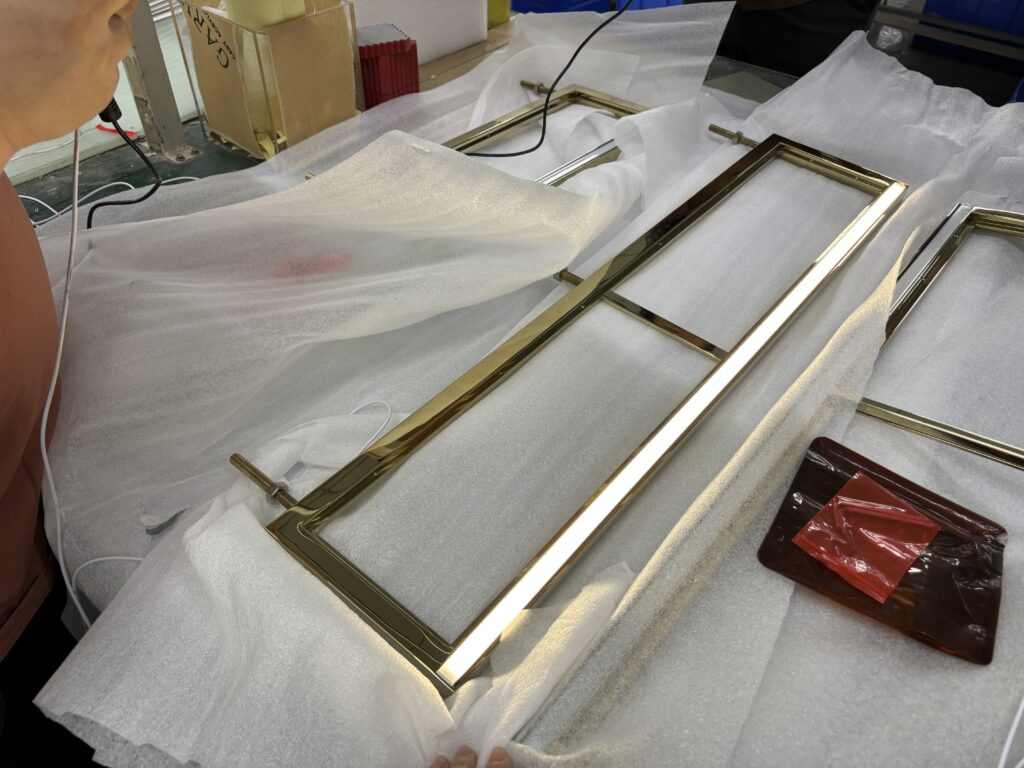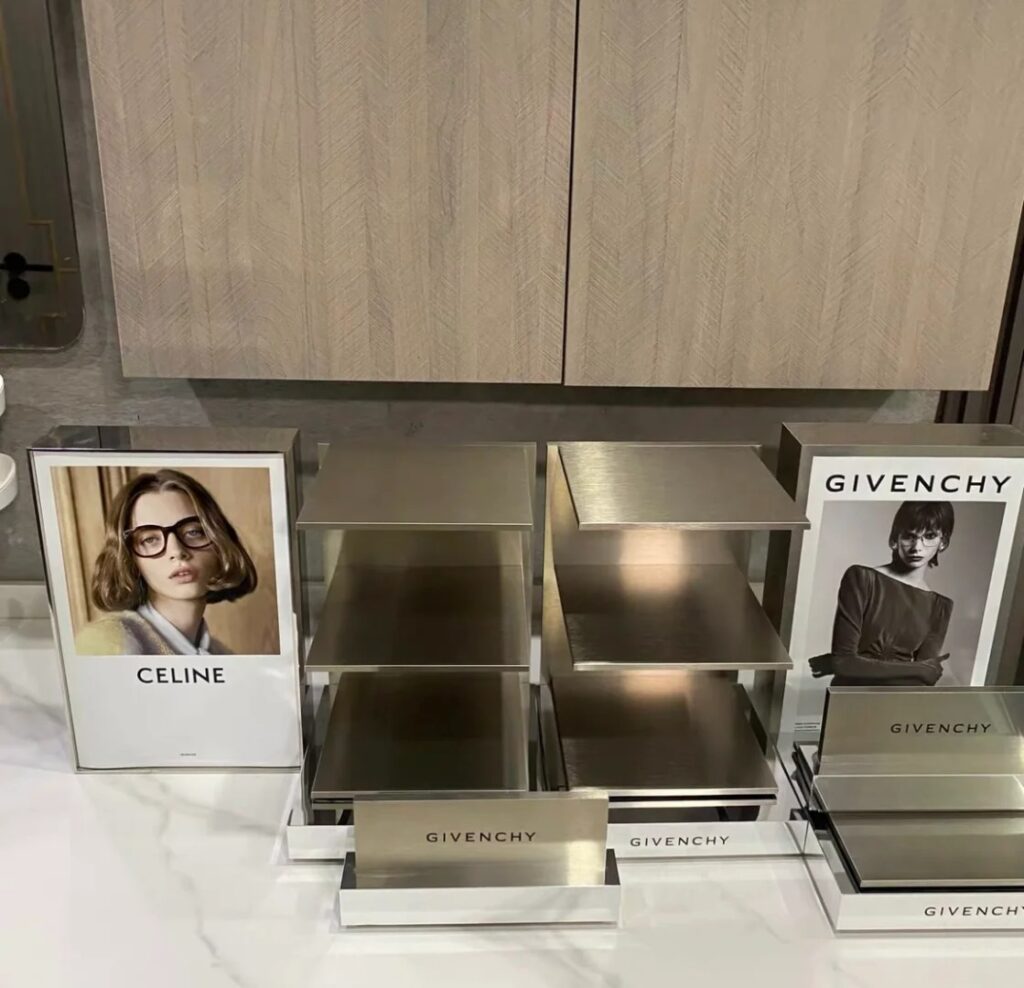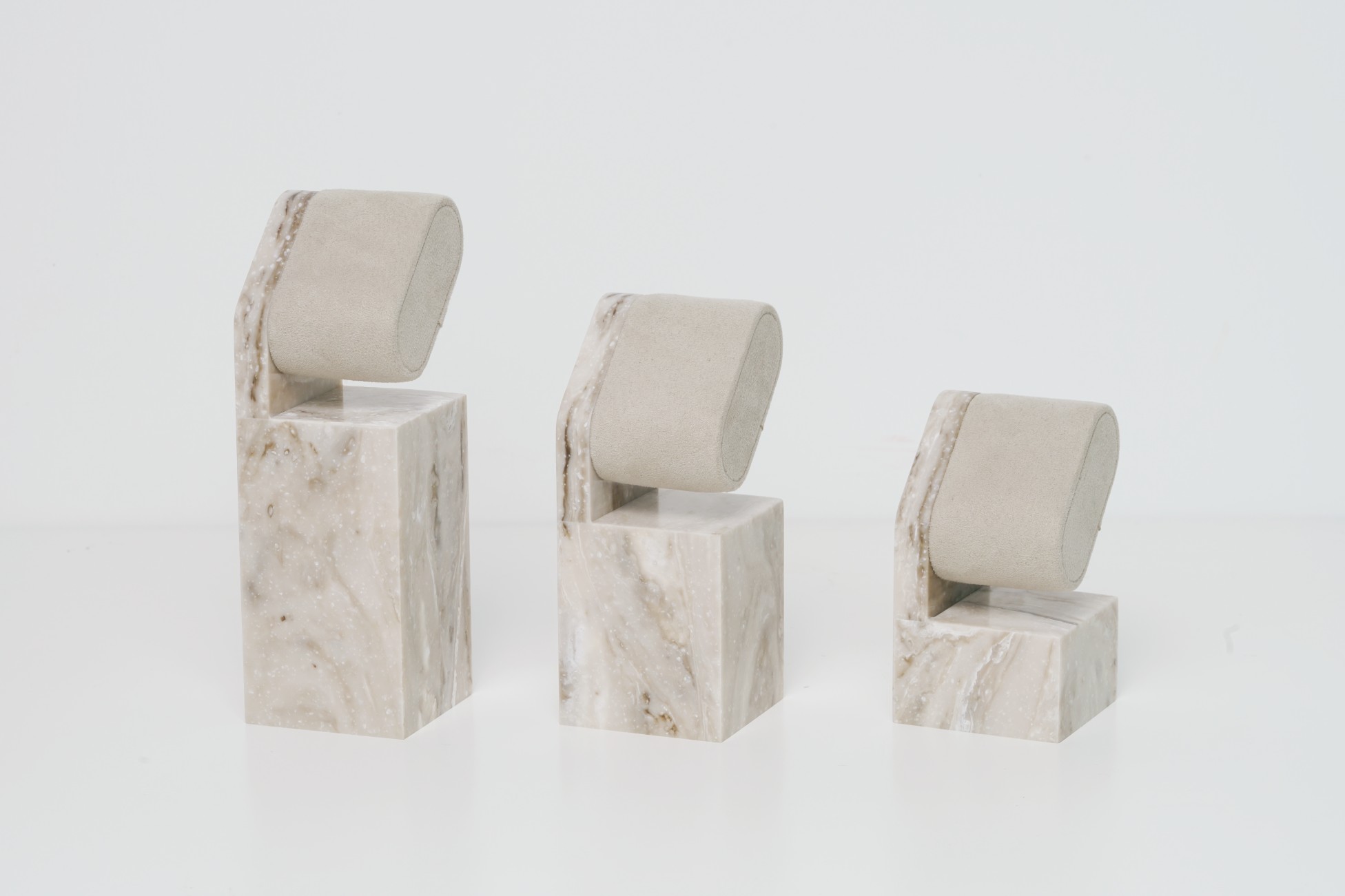How to Choose the Right Stainless Steel for Your Retail Displays
By Yan Luo | Samtop Display
Website: www.samtop.com
Email: yan@samtop.com
Stainless steel is one of the most durable and versatile materials used in retail fixtures. Understanding the different types of stainless steel, such as 304 and 316, is crucial for selecting the right material based on corrosion resistance, strength, and aesthetic preferences. This article discusses the two most commonly used stainless steel types for retail fixtures and their key properties to help you make an informed decision.


At Samtop, we specialize in providing custom stainless steel solutions for retail displays, helping brands choose the perfect material for their design requirements.
🌍 Why Stainless Steel?
Stainless steel is favored for its strength, corrosion resistance, and aesthetic appeal. It is a reliable material for creating long-lasting retail fixtures, display cases, and decorative elements that not only stand the test of time but also enhance the overall luxury and sophistication of your store design.
Stainless steel is classified into different grades based on its composition, each of which has specific applications. Two of the most commonly used types of stainless steel for retail fixtures are 304 stainless steel and 316 stainless steel.
🧪 304 Stainless Steel for Retail Fixtures: The Most Common Choice
304 stainless steel is the most widely used type of stainless steel in the industry, offering a balanced combination of corrosion resistance, strength, and aesthetic appeal. This grade is highly versatile and can be used in a wide range of retail applications.
Benefits of 304 Stainless Steel:
- Corrosion Resistance: 304 stainless steel has excellent resistance to corrosion, making it ideal for indoor retail applications where moisture exposure is minimal.
- Strength: This material is strong and durable, able to withstand frequent handling and high-traffic environments.
- Versatility: It can be easily shaped, cut, and polished, making it suitable for a variety of retail displays, such as shelving units, display cases, and furniture.
- Aesthetic Appeal: Its clean, shiny surface provides a sleek, modern look that complements luxury brands and contemporary retail environments.
Cons of 304 Stainless Steel:
- Limited Corrosion Resistance for Harsh Environments: While 304 stainless steel performs well in most indoor settings, it is less suitable for outdoor displays or environments exposed to saltwater or harsh chemicals.
- Slightly Less Resistant to Wear: It may not be as resistant to abrasion as 316 stainless steel in certain high-impact applications.
Example: A fashion boutique uses 304 stainless steel for its display tables and wall-mounted shelves. It provides a sleek and modern appearance that matches the store's luxury aesthetic.
🧪 316 Stainless Steel for Retail Fixtures: Superior Resistance for Harsh Environments
316 stainless steel is known for its superior resistance to corrosion, especially in environments that are exposed to saltwater or harsh chemicals. This makes it an ideal choice for outdoor retail fixtures or installations located in coastal areas or highly humid environments.
Benefits of 316 Stainless Steel:
- Excellent Corrosion Resistance: 316 stainless steel offers the highest level of corrosion resistance, especially against chlorides, salt, and other harsh environmental factors. It is perfect for outdoor retail installations or coastal environments where 304 stainless steel might degrade over time.
- Durability: This material is also highly resistant to oxidation and wear, making it ideal for high-traffic and heavy-duty applications.
- Longevity: Due to its resistance to corrosion and staining, 316 stainless steel ensures that your retail fixtures will maintain their appearance and functionality for years without the need for frequent maintenance.
- Aesthetic Appeal: Like 304 stainless steel, 316 stainless steel also has an aesthetically pleasing polished and sleek appearance, making it suitable for luxury and high-end retail designs.
Cons of 316 Stainless Steel:
- Higher Cost: 316 stainless steel is more expensive than 304 stainless steel due to its superior corrosion resistance and composition.
- Not Necessary for Indoor Use: If your retail fixtures will only be used in indoor environments without exposure to harsh elements, the additional cost of 316 stainless steel may not be justified.
Example: A luxury waterfront café uses 316 stainless steel for its outdoor display cases and signage. The superior corrosion resistance ensures that the fixtures will withstand the coastal climate and saltwater exposure.


